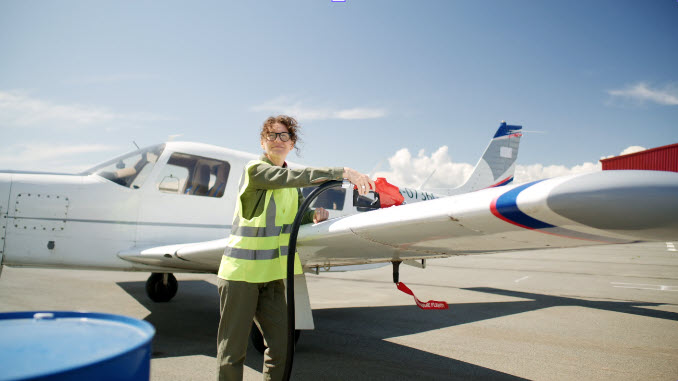How to Earn While You Learn to Fly
Flight training is one of the most exciting journeys you’ll ever take—but it’s also one of the most expensive. Whether your goal is to become an airline captain or simply fly for fun, the costs of flight hours, ground school, books, medical exams, and checkrides add up fast. Many aspiring pilots face the challenge of balancing training with paying the bills.
The good news? You don’t have to pause your dream while you save up a massive lump sum. By working smart, flexible side hustles, you can earn money while you train, spreading out your costs and keeping your training on track.
Below, we’ll cover five practical side hustles that fit perfectly with a pilot’s unpredictable schedule, allow you to stay connected to aviation, and can generate enough income to help pay for your next lesson.
Why Side Hustles Work for Student Pilots
Flight training isn’t like going to school full-time on a fixed schedule. Your lessons depend on weather, aircraft availability, and your instructor’s calendar. That means you need income streams that offer flexibility—work you can start and stop without penalty when training days come up.
A good side hustle for flight training should ideally:
- Pay a fair hourly rate or per-project fee.
- Offer flexible hours so you can work around flights.
- Require little to no formal commitment to specific shifts.
- Ideally complement your aviation career goals.
Side Hustle #1: Drone Photography & Videography

Why it’s perfect for student pilots:
Becoming a drone pilot under FAA Part 107 is a natural fit. You already understand basic airspace rules, weather patterns, and aerial perspectives. With a small investment in a good-quality drone, you can shoot real estate videos, special event footage, construction site updates, or aerial marketing for local businesses.
Potential Earnings: $100–$300 per shoot. Larger projects can pay $500+.
How to Start:
- Get FAA Part 107 certified—the test costs around $175 and can be studied for online.
- Invest in a reliable drone like the DJI Air 3 or Mini 4 Pro.
- Create a portfolio—offer free or discounted work for your first 3–5 clients to showcase your skills.
- Advertise your services on social media, Craigslist, and in local real estate groups.
Bonus: You’ll sharpen your skills in navigation, weather reading, and aerial judgment—all of which help in real flight training.
Side Hustle #2: Freelance Flight Simulator Coaching

Why it’s perfect for student pilots:
If you’re already familiar with simulators like Microsoft Flight Simulator or X-Plane, you can help others learn to “fly” virtually. Many gamers and aviation enthusiasts are eager for one-on-one coaching—how to handle approaches, navigate airways, or improve realism.
Potential Earnings: $20–$50/hour online.
How to Start:
- Record yourself flying in the sim and post short clips on TikTok, YouTube, or Instagram to attract students.
- Offer lessons via Zoom or Discord using screen-sharing.
- List your services on Fiverr or other freelance marketplaces.
Bonus: This keeps you mentally sharp on procedures, navigation, and ATC communication—making your real-life lessons more efficient.
Side Hustle #3: Airport or FBO Ramp Agent

Why it’s perfect for student pilots:
Working at your local Fixed Base Operator (FBO) or as a ramp agent gives you hands-on exposure to airport operations. You’ll be fueling planes, marshaling aircraft, loading baggage, and possibly interacting with corporate or airline pilots.
Potential Earnings: $15–$25/hour.
How to Start:
- Search “ramp agent” or “line service technician” jobs on Indeed or your local airport’s website.
- Highlight your interest in aviation in your application—it sets you apart.
- Be prepared for physically active work, sometimes outdoors in all weather.
Bonus: Networking. You’ll meet pilots, mechanics, and flight school staff who may offer tips, mentorship, or even job leads.
Side Hustle #4: Tutoring or Teaching Online

Why it’s perfect for student pilots:
If you have strong skills in math, science, English, or even test preparation, tutoring can be a steady income stream. Platforms like Wyzant, Varsity Tutors, and Cambly allow you to set your own schedule.
Potential Earnings: $20–$40/hour.
How to Start:
- Identify subjects you’re comfortable teaching.
- Sign up for an online tutoring platform or advertise locally.
- Offer a free 30-minute trial to attract clients.
Bonus: This can be completely remote—ideal if you need to work during bad weather days when flights get canceled.
Side Hustle #5: Rideshare / Delivery Driver

Why it’s perfect for student pilots:
Driving for Uber, Lyft, DoorDash, or Instacart gives you total control over your hours. You can work mornings, evenings, or weekends depending on your training schedule. You can even make extra money during surge hours.
Potential Earnings: $15–$30/hour (including tips and bonuses).
How to Start:
- Sign up with your chosen platform and pass their background and vehicle checks.
- Work during peak times—Friday nights, lunch rush, or Sunday evenings.
- Track mileage for tax deductions.
Bonus: You can listen to aviation podcasts or study ATC phraseology while you drive.
How to Maximize Your Side Hustle Income for Flight Training
Working side hustles is one thing—making them fund your dream efficiently is another. Here’s how to make your extra earnings go further:
1. Set Up a Flight Training Fund
Open a separate savings account just for your flying expenses. Every side hustle payment should go straight into this account. Avoid mixing it with your regular spending money.
2. Track Your Progress in Flight Hours
Instead of thinking in dollars, think in flight hours. If a $200 drone shoot pays for 1.5 hours in the trainer aircraft, you’ll feel more motivated to take on more work.
3. Leverage Bad Weather Days
When lessons get canceled due to weather, swap in work hours. This keeps your training budget growing without delaying your progress.
4. Reinvest in Your Earning Potential
If your side hustle requires equipment upgrades (better drone, tutoring materials, or simulator software), treat them as investments that can lead to higher pay.
5. Cut Unnecessary Spending
The fastest way to make side hustle money work is to combine it with expense reduction. Cutting $100/month in personal spending is the same as earning $100/month in side hustle income.
Balancing Work and Training
It’s easy to let side hustles take over your schedule, especially when the money is flowing. But remember—your ultimate goal is to become a pilot, not just a serial side hustler.
Here’s how to keep the balance:
- Prioritize flying over work. Schedule lessons first, work second.
- Avoid burnout. Don’t overload yourself with extra work to the point where you’re too tired to train effectively.
- Stay motivated. Keep a photo of your dream aircraft or airline uniform where you can see it while working.
The Bigger Picture: Side Hustles as Career Builders
Some of these side hustles don’t just pay for your training—they can boost your aviation career directly.
- Drone Photography can turn into a side business even after you’re a professional pilot.
- Ramp Agent jobs can help you secure interviews with airlines or corporate operators.
- Flight Sim Coaching positions you as an expert in procedures and could lead to ground instruction opportunities.
- Tutoring builds communication skills—critical for teaching students if you become a Certified Flight Instructor.
- Rideshare driving may not be aviation-related, but it sharpens your customer service skills and time management.
Summary
Flight training is an investment in your future—a future with an incredible office view above the clouds. The challenge is finding a way to fund it without putting your life on hold. Side hustles give you the flexibility to earn on your own terms, keep your training momentum, and even build valuable skills for your aviation career.
Whether you’re flying drones, teaching students, loading baggage on the ramp, coaching simulator pilots, or delivering groceries, every dollar you earn gets you closer to your next takeoff.
The key is to choose a side hustle that fits your schedule, aligns with your skills, and keeps you moving toward your goal.
Because at the end of the day, it’s not just about making money—it’s about keeping your dream airborne.

Comments are closed.